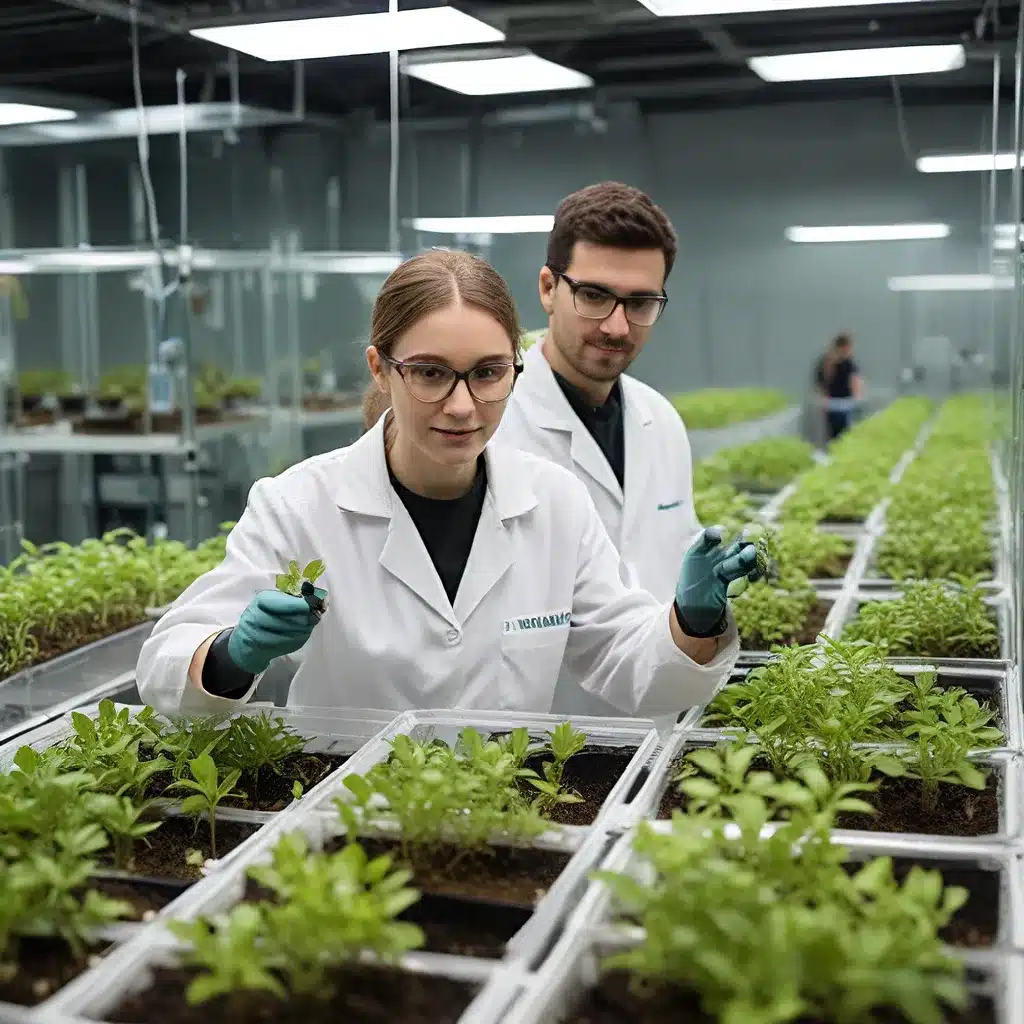
Understanding the Basics of Tissue Culture
Tissue culture, also known as in vitro propagation, is a revolutionary technique that allows aquarium enthusiasts to grow and propagate aquatic plants on a larger scale. This method involves taking small plant samples, known as explants, and nurturing them in a sterile, controlled environment to produce new, genetically identical plants. By mastering tissue culture techniques, aquarists can unlock the potential to rapidly propagate rare, delicate, or hard-to-find aquarium plants, transforming their aquascapes and providing a sustainable solution for plant-based aquariums.
Reddit and other online communities have become valuable resources for aquarium enthusiasts seeking to explore the world of tissue culture. These platforms provide a wealth of knowledge, allowing hobbyists to learn from experienced practitioners and stay up-to-date with the latest advancements in this field.
Selecting the Right Plants for Tissue Culture
Not all aquarium plants are equally suitable for tissue culture propagation. Some species, such as Cryptocoryne and Anubias, are known to thrive in this controlled environment, making them excellent candidates for this technique. Other plants, like Ludwigia and Rotala, can also be successfully propagated through tissue culture, allowing aquarists to quickly and efficiently expand their aquatic plant collections.
When selecting plants for tissue culture, it’s essential to consider factors like growth rate, fragility, and availability. Faster-growing plants with sturdy structures tend to adapt better to the in vitro conditions, while delicate or slow-growing species may require more specialized care and attention.
Setting Up a Tissue Culture Lab
Establishing a tissue culture lab for aquarium plants requires a carefully controlled environment and specialized equipment. The key components include:
- Laminar Flow Hood: This crucial piece of equipment provides a sterile work area, shielding the plant samples from airborne contaminants.
- Autoclave: Used to sterilize media, tools, and other materials, ensuring a clean and safe working environment.
- Growth Chamber: A temperature and light-controlled chamber that mimics the ideal conditions for plant growth and development.
- Supplies: Items such as culture vessels, nutrient-rich media, and specialized tools for handling the plant samples.
Attention to detail is paramount when setting up a tissue culture lab. Proper sterilization, temperature regulation, and nutrient media preparation are essential for the success of your aquarium plant propagation efforts.
Mastering the Tissue Culture Technique
The process of tissue culture propagation involves several critical steps:
- Explant Preparation: Selecting and preparing the plant samples, ensuring they are free of pests, diseases, and contaminants.
- Sterilization: Thoroughly disinfecting the plant material and all equipment to prevent microbial growth.
- Media Preparation: Formulating the nutrient-rich media that will nourish and support the plant samples during the culture process.
- Inoculation: Carefully transferring the plant explants into the sterile culture vessels filled with the prepared media.
- Incubation: Maintaining the optimal temperature, lighting, and humidity conditions for the plant samples to thrive.
- Subculturing: Regularly transferring the growing plant material to fresh media to ensure continuous, healthy development.
- Acclimatization: Gradually acclimating the cultured plants to the aquarium environment before introducing them to the main tank.
Mastering these techniques requires patience, attention to detail, and a deep understanding of plant physiology. As you gain experience, you’ll be able to fine-tune your processes and achieve consistently successful results.
Advantages of Tissue Culture Propagation
Incorporating tissue culture techniques into your aquarium plant propagation strategy offers numerous benefits:
- Rapid Multiplication: Tissue culture allows you to produce a large number of genetically identical plants from a single explant, significantly increasing your plant stock.
- Increased Availability: Access to a steady supply of rare, hard-to-find, or difficult-to-propagate aquarium plants becomes easier with tissue culture.
- Disease and Pest Control: The sterile environment of the tissue culture lab helps eliminate the risk of pests and diseases, ensuring the health and vigor of your plant samples.
- Reduced Harvesting Impact: By propagating plants through tissue culture, you can minimize the need to collect from natural habitats, promoting sustainability and conservation efforts.
As you delve deeper into the world of tissue culture, you’ll discover the profound impact it can have on your aquarium hobby, allowing you to create stunning, thriving aquascapes that showcase the beauty and diversity of aquatic plants.
Integrating Tissue Culture into Your Aquarium Maintenance
Incorporating tissue culture techniques into your regular aquarium maintenance routine can provide a wealth of benefits. By cultivating your own aquarium plants in a controlled lab setting, you can ensure a steady supply of healthy, vibrant specimens to maintain and enhance your aquascapes.
King Aquarium, a leading resource for aquarists, suggests that integrating tissue culture propagation into your aquarium care regimen can help you achieve the following:
- Faster Plant Growth and Establishment: Tissue-cultured plants often exhibit accelerated growth and more robust root systems, allowing them to thrive and integrate seamlessly into your aquarium.
- Improved Water Quality: Healthy, rapidly growing aquarium plants can effectively absorb excess nutrients, helping to maintain optimal water parameters and reduce the risk of algal blooms.
- Cost-Effective Plant Sourcing: By producing your own plants through tissue culture, you can reduce the ongoing costs associated with purchasing new specimens from specialty retailers or online stores.
- Sustainable Aquascaping: Tissue culture propagation enables you to maintain and expand your aquarium plant collection without relying solely on wild-harvested specimens, promoting environmental sustainability.
As you embark on your tissue culture journey, remember to approach it with patience, attention to detail, and a willingness to learn. By mastering these techniques, you’ll unlock a world of possibilities, transforming your aquarium into a thriving, visually stunning ecosystem that showcases the beauty and diversity of aquatic plants.

